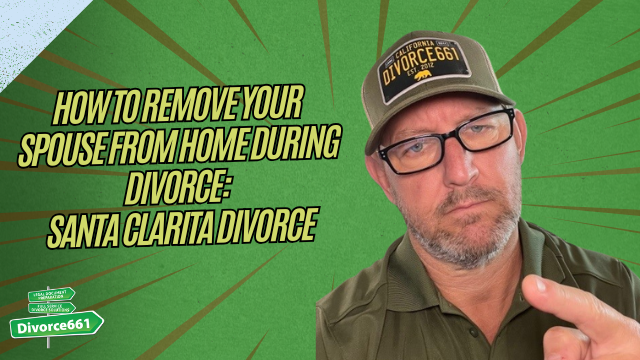How To Remove Your Spouse From Home During Divorce: Santa Clarita Divorce
Navigating the process of removing a spouse from a shared home during a divorce can be complicated, especially when it comes to the legal and financial aspects of property ownership. Tim Blankenship of Divorce661 sheds light on one of the most effective strategies to fully separate your spouse from your home after divorce, particularly in the Santa Clarita area. Understanding this process can help you take the right steps toward moving forward with your life.
The Challenge of Removing a Spouse From the Home
When a couple divorces, one common concern is how to remove the other spouse from the family home. While it might seem straightforward to simply remove a spouse’s name from the property deed, this step alone doesn’t sever all ties to the home. Tim emphasizes that although you can remove your spouse’s name from the deed, they will still remain responsible for the mortgage loan unless additional actions are taken.
Why Removing a Name From the Deed Isn’t Enough
The property deed and the mortgage loan are two separate legal instruments. The deed establishes ownership of the property, while the mortgage is the loan used to finance the purchase. Removing your spouse’s name from the deed transfers ownership rights, but the mortgage lender still holds both parties accountable for the loan repayment if both names remain on the mortgage.
This means that even if your spouse no longer legally owns the home, their credit and financial liability remain tied to the mortgage. This can cause complications down the road, such as affecting their ability to obtain new loans or impacting their credit score.
The Only Real Way: Refinancing the Property
According to Tim, the only sure method to completely remove your spouse from your home is to refinance the mortgage solely in your name. Refinancing involves replacing the existing mortgage with a new loan, which ideally excludes your spouse as a borrower.
Refinancing: What It Means
- New Loan Application: You apply for a new mortgage on the property, qualifying based on your own income, credit, and financial standing.
- Spouse Removed From Loan: If approved, the new loan pays off the old mortgage, and your spouse is no longer responsible for the loan payments.
- Full Ownership and Responsibility: You then hold both the deed and the mortgage in your name alone.
Potential Challenges With Refinancing
While refinancing is the cleanest solution, it’s not without its hurdles. Current interest rates may be higher than when the original mortgage was taken out, making refinancing less attractive or more expensive. Additionally, qualifying for a refinance depends on your financial situation, including your credit score, income, and debt-to-income ratio.
Therefore, before pursuing this option, it’s crucial to assess your financial capability to refinance and weigh the costs and benefits carefully.
Summary: What You Need to Know
- Removing a spouse’s name from the deed alone does not remove them from the mortgage loan.
- The mortgage remains a joint responsibility until the loan is refinanced or paid off.
- Refinancing the mortgage in your name only is the only way to fully release your spouse’s financial obligation to the home.
- Current interest rates and personal financial qualifications can complicate refinancing.
Moving Forward
Divorce is a challenging transition, and handling shared property adds an extra layer of complexity. Understanding the importance of refinancing to remove your spouse from your home is a critical step toward financial independence and peace of mind. If you’re considering this path, consulting with a knowledgeable divorce attorney or mortgage professional can provide personalized guidance tailored to your unique situation.
By taking the right steps, you can ensure that your home truly becomes your own once again.

